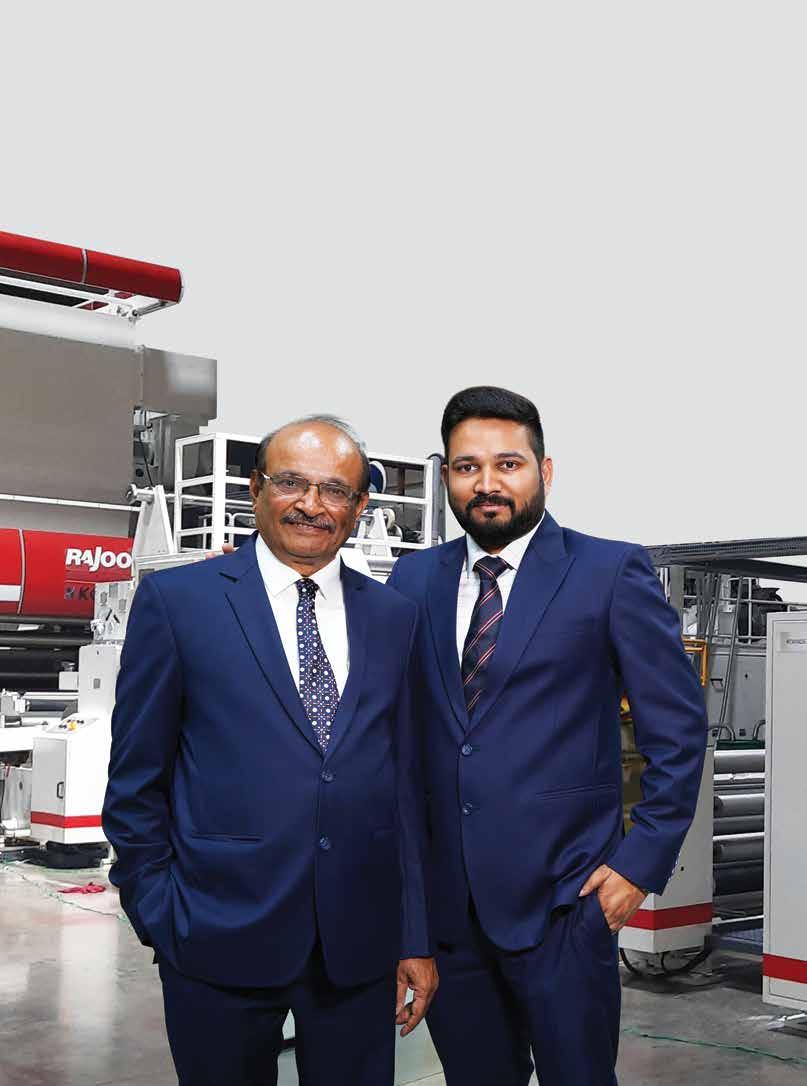
6 minute read
Sustainability: A Big Value-add of IML
We Stretch to Meet
Your Marcom Needs
Advertisement
Corporate CommuniCation ServiCeS Content Development ServiCeS
eDitorial Co-orDination meDia DiSSemination ServiCeS
online market SurveyS CuStomer interaCtion reportS Creative StuDio
Custage Marketing Solutions LLP 406, vikas Centre, Dr. C. G. road, Chembur, mumbai 400 074, india. T: +91-22-2520 4436; M: +91-88790 50327; E: info@custage.com


There are many ways where we can help contribute to the environment. There is no single solution that fits all. Everyone has to find their own secret mantra. For this, we, at Calco, set up our ‘MEGA Factory 2’, a sustainable workplace.

Are we not exposed to this subject far too much, far too many times? Probably yes, but do we really build this theme in our business plan? We have known global organisations committing to low environmental carbon footprint, being vocal about the Paris Agreement on climate change. A lot of times we forget that we can also contribute, in whatever smaller ways, to distinguish and build our business. Every major petrochemical / oil company, in late ’90s, surely had the muscle and money to wither any storm and build a stronger business. However, in none of the board meetings, environmental impact was the central issue. Fast forward to 2021, almost all leading companies are technology based; not just IT, but also manufacturing (read Tesla). Central theme of emerging corporates is based on sustainability; be it intelligent mobility, environmentfriendly technologies and a connected world. Even within the oil companies, there is a growing clamour for environment-friendly technologies. A recent board meeting of a leading oil conglomerate took prominent place in the news, where an environmental

Calco, Setting Your Business Apart
With Sustainability
activist was appointed as board member of a fossil fuel company – a potential shift of discussion and decision making of the future of the company.
In an interview, Ursula Burns, former CEO of Xerox, spoke about how leading a company of the 2000s was different from a current company. Employees, shareholders and other ask questions about gender bias, social engagement and environment. No longer, employers have to deliver on strong financial numbers. They also have to answer to the new breed of employees on all these significant points.
Thought Leadership at Calco
When we started thinking about sustainability, way back in 2010, we wanted to make products that are sustainable. Hence, we tied up with DRDO for India’s first patented, ‘Atmanirbhar’ biodegradable plastic. Moving on to 2016, we realised that this must extend beyond materials, we have to make a ‘truly sustainable’ process; a factory where every product made has less impact on the environment than its predecessor process and workplace. Hence, we started with ‘MEGA Factory 2’ in Haryana spread across 1,00,000 sq. ft., which oversees three fundamental elements of a sustainable workplace: water, electricity and product innovation. Water
With a harvesting system and sewage treatment plant (STP) / effluent treatment plant (ETP), we aim to reuse almost every drop of water in our system. Not a single litre of water is thrown down the drain. Infact, with appropriate collection, we aim to have ‘Net Zero’ water consumption by the end of the year.
Electricity
Similarly, with smart energy consumption and solar plant, we plan to save 240 tonnes of CO2 in a year, roughly equivalent to CO2 absorbed by 12,000 trees.
Product Innovation
Key product innovation such as environment-friendly eCiLON PA6 helps promote circular economy with excellent mechanical strength and rigidity. Till date, we have helped circulate 10,000 MT of plastic since we launched this brand in 2013.
It’s for All to Contribute
There are many ways where we can help contribute to the environment. There is no single solution that fits all. Everyone has to find their own secret mantra which can help build a successful and sustainable business model; the one where our stakeholders, employees and their families can feel proud of!

What Does Sustainability Mean
for Your Business?
Ruby Thapar
A Reputation and Sustainability Consultant and an Executive Coach, Mumbai The final goal post of a sustainability framework must be to deliver genuine change with clear performance goals and progress against them.
It’s an undeniable fact that one can’t produce a sustainability report without having done solid and real work on the ground. As a country, we are largely compliant on sustainability reporting; we have progressed to integrated reporting, it’s also published in the public domain and we are equally aligned to the global trends and requirements on sustainability reporting.
The KPMG 2020 Survey of Sustainability Reporting highlights:
l Monumental changes in sustainability reporting since the survey was first published in 1993. Back then - almost 30 years ago - a paltry 12 per cent of companies published sustainability reports. Today, the figure stands at 80 per cent and over 90 per cent among the largest companies in the world.

l Since 2017, the Securities and Exchange Board of India (SEBI) has published a mandate encouraging the voluntary adoption of Integrated Reporting by the Top 500 listed companies. In 2019, SEBI extended the Business Responsibility Reporting (BRR) requirements to the Top 1000 companies, with significant growth in integrated reporting in India since 2017.
l The use of sustainability reporting guidelines and standards is increasingly widespread. In 2020, a significant majority of reporting companies used some kind of guidance or framework to support their sustainability reporting. GRI remains the most commonly used reporting standard or framework. When it comes to other guidelines and standards, the Sustainability Accounting Standards Board (SASB) framework and International Organization for Standardization (ISO) standards are the most commonly used for sustainability reporting.
l Research suggests that corporate reporting on the Sustainable Development Goals (SDG) focuses almost exclusively on the positive contributions that companies make towards achieving the goals, and lacks transparency of their negative impacts.
The stats are encouraging and a step forward in transparency. I remember attending an international GRI training many years back and at some point, I mentioned to the trainer - we have understood there is a business case for sustainability, we have studied the standards, and we have started to produce reports. What now?
Diving Deep
Sustainability as a business practice has 2 components: one is of compliance which is defined by regulators and the role of the companies here is to comply. The second piece is currently being led by voluntary standards, such as GRI, SDG, SASB and others - this piece is for the company to own, define and make meaning of.
While companies have got the reporting piece in place, there are questions that beg indulgence, more so now, when the world collectively is going through a metamorphosis:
l Why and for whom are we producing the sustainability reports?
l What objective must the integrated sustainability report fulfill for your company?
l How do you decide your sustainability agenda or what is material to your business?
l How much real value are your company’s sustainability practices creating for you?
l What would be your definition or metrics of real value for your business?
l How would you measure that metrics of real value?
l What have been some of the learnings or
To know more, please subscribe to Polymers Communiqué at subscriptions@polymerscommunique.com The more your
company can show its purpose in delivering value to its customers, its employees and its communities, the better able
you will be to compete and deliver long-term, durable profits for shareholders.










